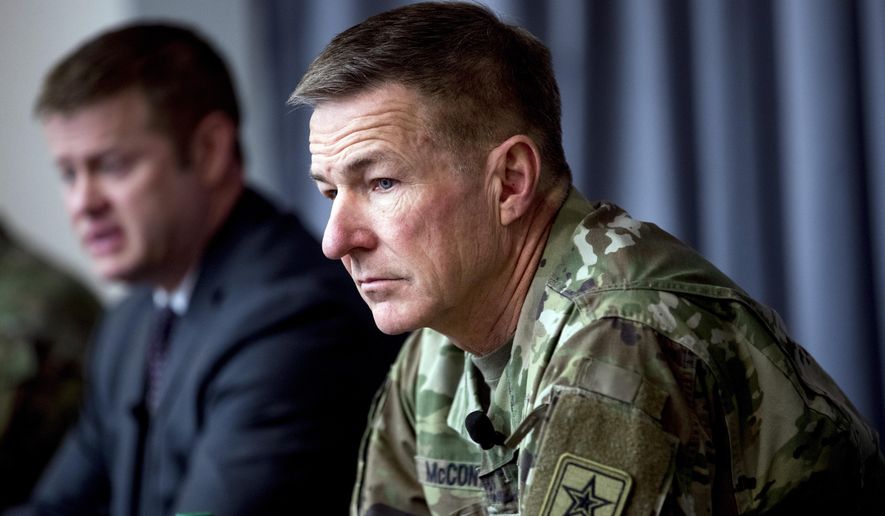The Army must transform immediately to meet the new challenges of operating in an era of great-power competition against strengthening rivals like China or Russia, Gen. James C. McConville, the Army Chief of Staff, said Friday at this year’s National Guard Conference in Washington, D.C.
The kind of change he envisions can’t be accomplished through incremental improvements, Gen. McConville said.
“Only ’transformational’ change will build the Army that we need for the future. Now is the time,” he said.
Part of the transformation means creating combat-ready units, such as the Multi Domain Task Force — which can combine elements such as electronic and cyber warfare along with precision artillery fire. Likewise vital to the Army’s mission, Security Force Assistance Brigades have been created to train, advise and assist troops of partner nations. There are currently six SFABs in the Army now.
“The future will be contested in all five domains — also in space and in cyber,” Gen. McConville said.
The Army also is changing how it identifies potential senior-level leaders, such as battalion commanders. Now, lieutenant colonels attend a five-day assessment to determine they are fit for command. In past years, a board selected the new commanders after reading their personnel files.
“We used to determine that in about 2 1/2 minutes. We’ve learned a lot,” Gen. McConville said.
The last time the Army went through such a significant change was during the years after the Vietnam War. The service fielded new weapon systems such as the M1 Abrams tank, the Bradley Fighting Vehicle and the Blackhawk helicopter. To counter a Warsaw Pact invasion of Western Europe, the Army adopted “AirLand Battle” — a concept of close coordination between aggressively maneuvering ground forces and air forces. It also set up major maneuver areas such as the National Training Center near Barstow, Calif.
But now it’s time to take the next step in evolving the Army’s fighting doctrine, Gen. McConville said.
“We’re now reaching the limits of the technology and designs we developed in the 1970s. The threats we face have changed,” he said.
• Mike Glenn can be reached at mglenn@washingtontimes.com.




Please read our comment policy before commenting.